 Internal Communication Pains
Internal Communication Pains
Do you appreciate the value of an internal communication campaign? Aimed to inform, engage, and educate employees, it is a powerful tool. Learn how and why.
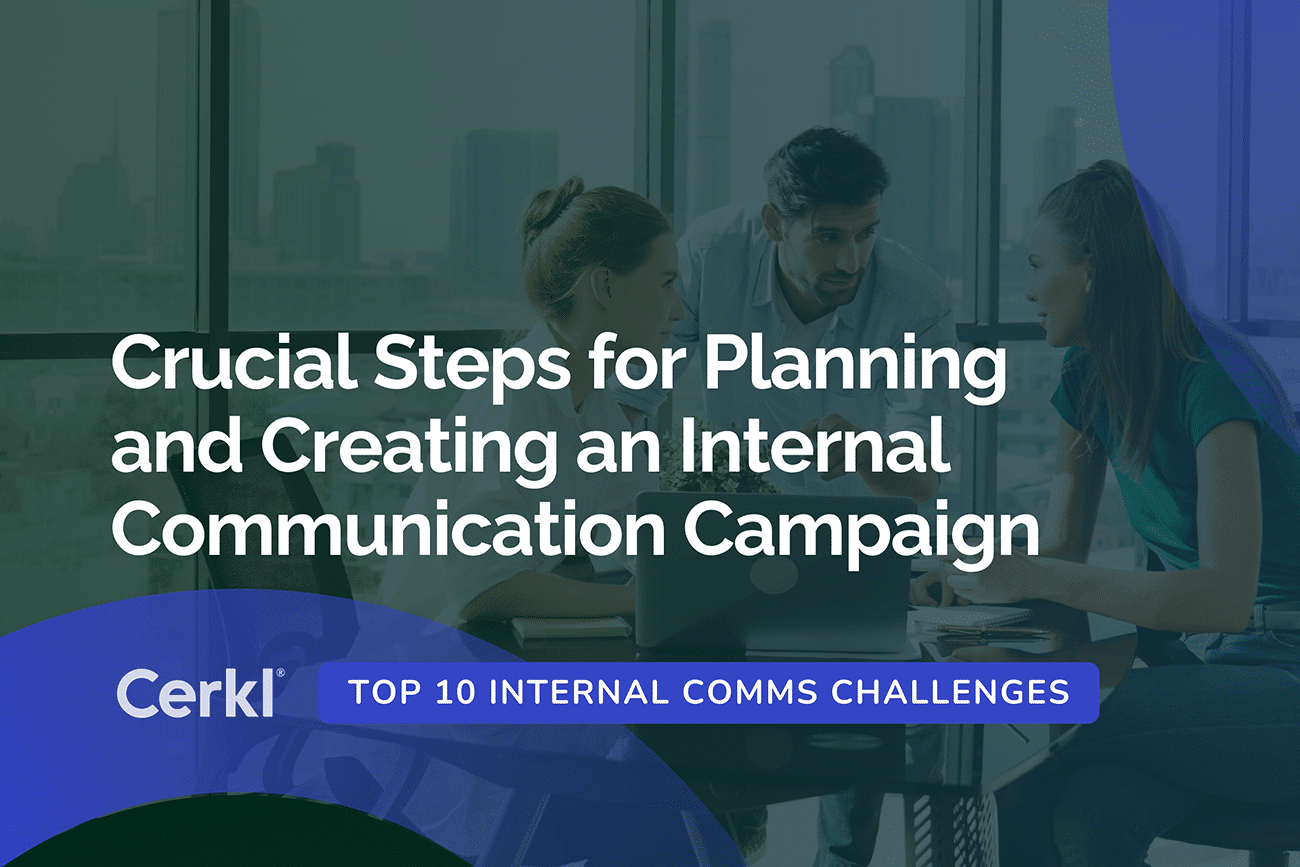
.webp)
Measure the ROI of using modern internal communications. Get the template for free without any risk or commitment.
Access NowThe key to maintaining the ongoing success of an internal communication campaign lies in achieving continuous campaign socialization. By ensuring employees not only receive the message but actively engage with it, discuss it, and integrate it into their work practices, organizations can create lasting impact and achieve the goals of internal comms campaigns.
Internal communications are imperative for any organization, but simply delivering information is not enough. You need to ensure employees understand, discuss, and internalize the message for long-term impact. One problem is that because there is so much information to share with employees, it can be difficult to get it to the right people at the right time.
Numerous studies, including a recent one published in Sage Journals in August 2024, show that information overload is positively related to stress, burnout, and mental health issues. It is also negatively related to job satisfaction. Furthermore, information overload is associated with serious performance losses, especially in connection with disruptions and interruptions.
This is why ongoing campaign socialization is so important. It isn’t a one-time event. It’s a continuous process that requires consistent effort throughout the campaign lifecycle. It involves using various communication channels, fostering discussions, and addressing employee questions as they arise.
The need for ongoing campaign socialization was one of the 10 top challenges Maddy Rieman, Cerkl’s Head of Customer Success, identified during our workshop at the 11th Annual Strategic Internal Communications – West Conference in San Francisco in February 2024. This is our eighth post in a series of 10. It focuses on campaign socialization in the context of a successful internal communication campaign. We talk about planning and creating internal comms campaigns as well as best practices for promoting and implementing them. Because socialization and ongoing metrics work together, we cover ways to measure and use campaign results.
An internal communication campaign comprises a series of coordinated messages aimed at informing, engaging, or influencing employees within an organization. It’s a strategic approach to ensure everyone in the company is on the same page about important initiatives, changes, or cultural aspects.
These internal communications might involve promoting a new policy, boosting app usage, or increasing participation in benefits enrollment. The campaign uses clear messages delivered through various channels like email, intranet, or even in-person meetings. The aim, of course, is to maximize employee engagement and retention.
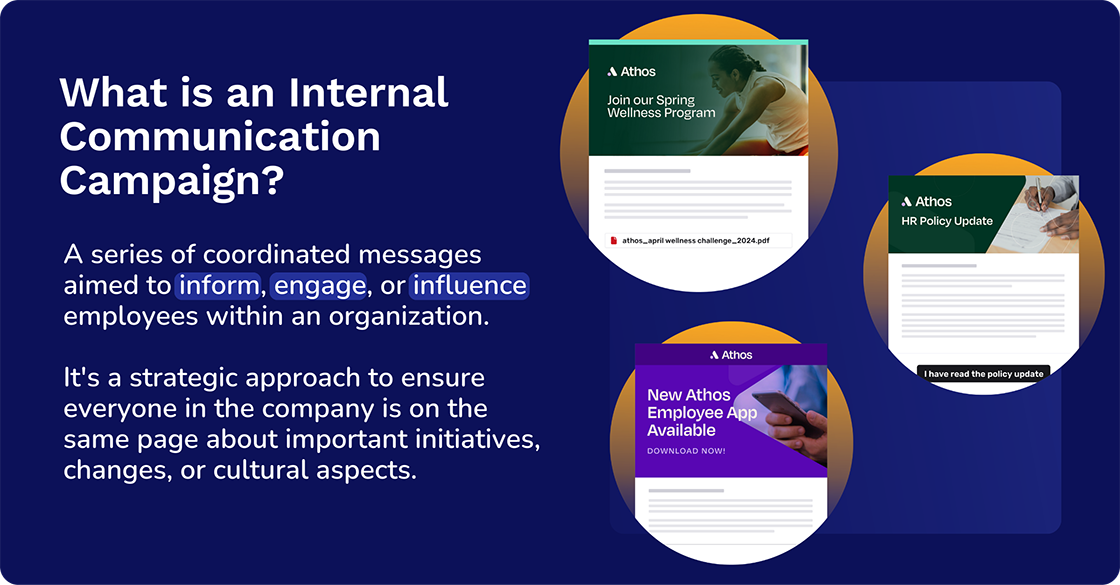
Ocasta, which operates in the United Kingdom and Europe, points out that internal campaigns are the cornerstone of effective internal communications. They can cover many different topics, from change management and brand advocacy to health and wellness programs, and diversity and inclusion efforts. “The aim is to inspire, inform, and involve employees, fostering a cohesive and motivated workplace culture.”
But what happens when stress negatively impacts campaigns?
Gallup’s State of the Global Workplace 2024 report shows that 41% of employees state that they are experiencing “a lot of stress.” However, according to Gallup CEO, Jon Clifton, stress varies significantly depending on how organizations are run. And Gallup research indicates that those who work in companies with bad management practices are actively disengaged, and nearly 60% more likely to be stressed than people working in environments with good management practices, who are engaged. In fact, he states, experiencing “a lot of stress” is reported approximately 30% more often by employees working under bad management than by the unemployed.
“It’s understandable when you consider that a major cause of workplace stress is not having the materials and equipment you need to do your job effectively. That problem can’t be solved with a yoga mat; it requires action from management.”
Jon Clifton, Gallup CEO
Ongoing campaign socialization is a crucial strategy for ensuring that any long-term campaign has a lasting impact.
The name itself is self explanatory. Socialization is a process that involves sharing information and ensuring people are familiar with something. An ongoing socialization campaign is a campaign that happens over a sustained period and is not just a one-time event. It’s a two-pronged approach that involves spreading awareness and maintaining engagement.
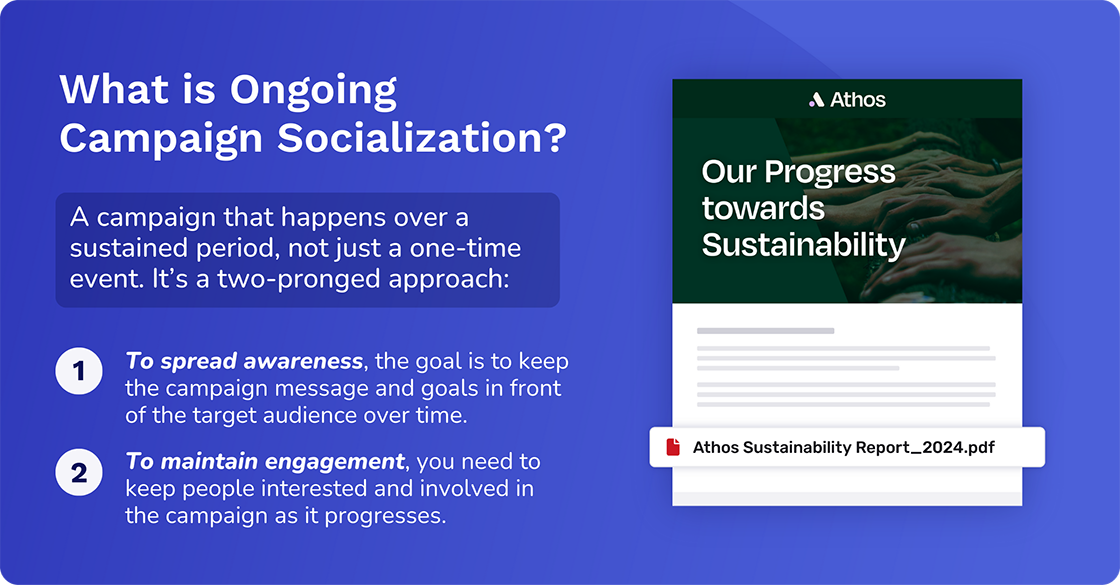
For instance, a company running a year-long sustainability initiative might hold regular workshops and events to educate employees about the program. Alternatively, a non-profit advocating for policy change might release regular social media updates and infographics to keep the issue in the public eye. Both fit the bill of ongoing campaign socialization.
As Maddy says, “Essentially, no campaign is ever a one-and-done event. There’s a lot of prep work to get the ball rolling on a new campaign, but it doesn’t end there. You must understand what your intentions are for any given campaign and continuously monitor your approach to ensure you are achieving those goals. If the goal is to get everyone to switch over to a new system, or for employees to complete open enrollment, then what are your weekly metrics for these campaigns? How are you disseminating those metrics to those parties who matter most?”
Don’t worry if you can’t answer these questions. You can find out more in the first of our Top 10 Internal Comms Challenges, Communicating with Executives: How to Show Them the Value of Comms. The post is all about the importance of internal communications and how to show return on investment (ROI) to those at the top of your organization.
Quantify the financial benefits of your internal communications
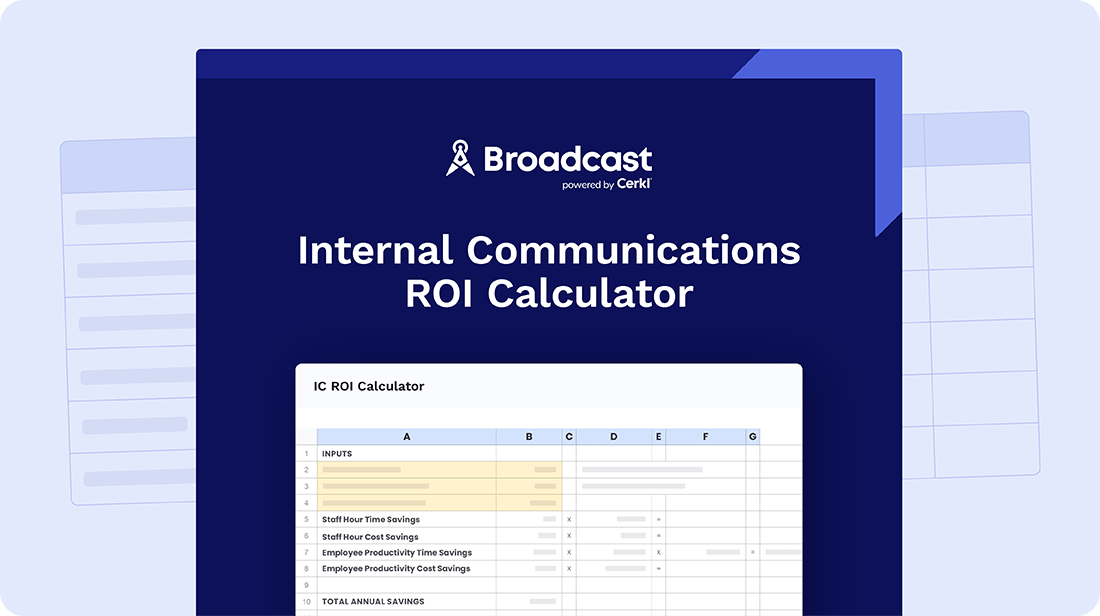
When focusing on ongoing campaign socialization, there are many topics that internal communicators can tackle. But, says Maddy, “any initiative you are working on should have ongoing metrics and socialization paired together.”
She highlights examples that include:
There are many forms of internal communications that HR and communicators can use to increase awareness and employee engagement. Let’s look at three broad examples from Maddy’s list above.
Whatever strategies you decide to use, crafting a successful communications campaign involves a clear roadmap. Here’s a breakdown of the key steps to plan and create one.
What do you want to achieve with your internal comms campaigns? Is it brand awareness, increased sales, or a shift in employee behavior? Set SMART goals (that are Specific, Measurable, Achievable, Relevant, and Time-bound) to give your campaign direction and a way to measure success.
Who are you trying to reach? Understanding your target audience's demographics, interests, and preferred communication channels is crucial. Tailor your message and tone accordingly.
What's the core message you want to convey? Keep it clear, concise, and benefit-oriented. Use strong calls to action (CTAs) that prompt your audience to take a desired step.
Create engaging content that resonates with your audience. This could be blog posts, videos, infographics, presentations, or social media content. Ensure visuals are high-quality and support your message.
Maddy advises creating a priority matrix for all campaigns. “I personally like the Impact Effort Matrix.” This tool will help you to analyze priorities using a quadrant:
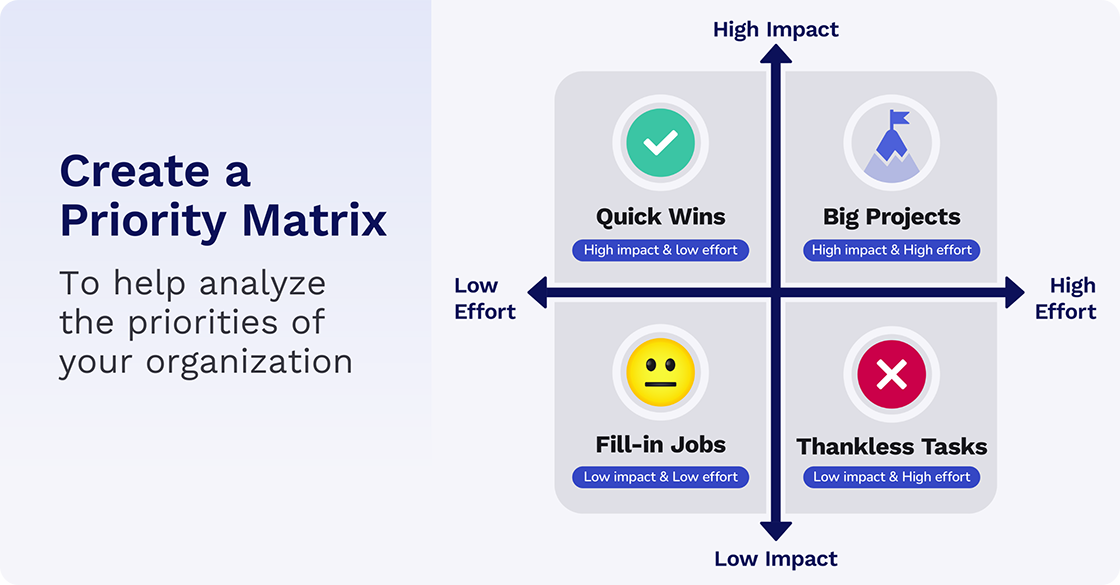
Maddy also advises outlining what each of the quadrants means to your organization.
“Everyone needs to be on the same page when it comes to the amount of effort and value the campaign will be given and ultimately, give in return to your organization. Each quadrant should have a defined amount of comms efforts and example socialization steps that are taken for each version.”
Quantify the financial benefits of your internal communications

Establish a realistic timeframe for your campaign and allocate resources accordingly.
Set internal communications campaign metrics to measure performance. This will help you understand what’s working and identify areas for improvement. As Maddy says, it’s vital to pair socialization and ongoing metrics when you work on any internal communications initiative.
Once you’re ready to kick off your internal communication campaign, you need to find the best way to implement and promote it so your efforts are not in vain. As Maddy points out, there’s so much that organizations need to communicate to employees, it’s difficult to get all the pertinent information in front of each employee at the right time.
She shares some of her best practices along with a few tips to help you get it right.
It’s important to create a matrix for each internal communications campaign. As mentioned above, Maddy recommends using the Impact Effort Matrix.
“It’s imperative to get your matrix and definitions that relate to each quadrant in front of your major stakeholders before they submit their first campaign. Most importantly, it’s vital to identify what isn’t required. Getting buy-in on the process and having everyone sing ‘Kumbaya’ beforehand will help you when you’re in the thick of it.”
This is such a simple tip from Maddy, but one that can make an enormous difference.
“Use hyperlinks at the top of all your email sends throughout a given campaign to ensure it’s easy for employees to access those links even when they aren’t thinking about that specific campaign.”
She also suggests identifying where employees spend most of their time and what systems they use. Recognize what tools they need to clock into or use to do their work every single day.
It stands to reason that identifying employee needs and practices will enable you to tailor communication messages to be relevant and engaging. This increases the likelihood that employees will pay attention to the information and find it valuable. Identifying employee practices can also help you choose the most effective communication channels and target them directly within these platforms.
Furthermore, understanding employee needs allows you to anticipate potential concerns or challenges related to the communication campaign.
Maddy asks, “Can you add a small banner or image to those systems to grab the attention of your employees around pertinent campaigns?”
There is no doubt that using short, clear messages and compelling visuals on banners can effectively capture employee attention and encourage them to want to learn more about the campaign. In fact, strategic placement of visuals within the systems employees use most frequently can significantly increase campaign awareness and engagement.
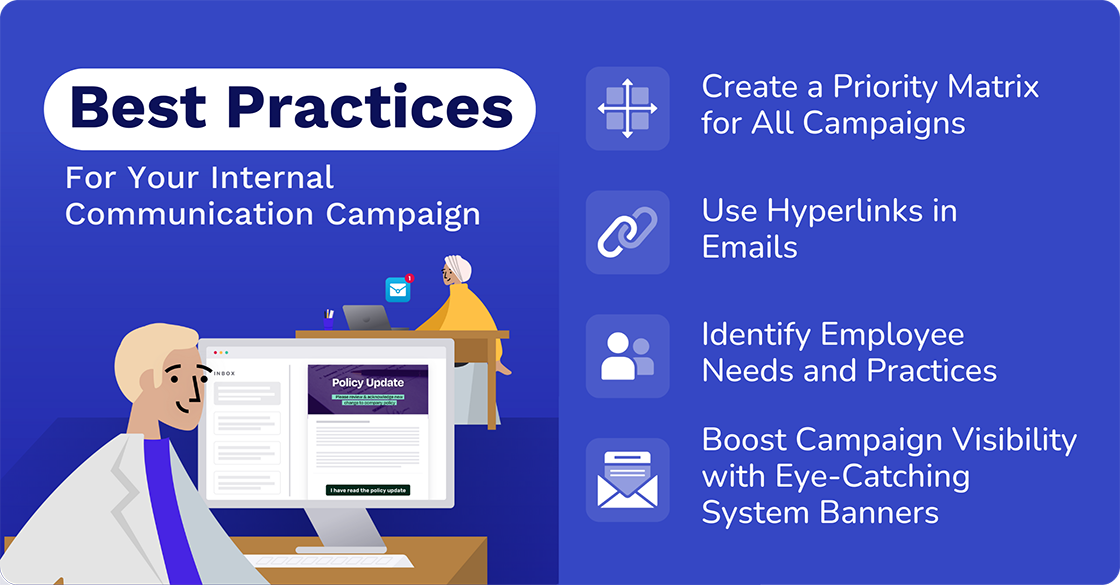
The success of any internal communications campaign hinges on your ability to measure its effectiveness and adapt based on the data.
According to Grammarly’s 2024 State of Business Communication report, 84% of business leaders and 70% of knowledge workers have been communicating across more channels at work in the past 12 months. It also reveals that emails, virtual and in-person on-site meetings, and text-based chat account for more than nine hours or about 23% of the workweek spent communicating through collaboration tools. The result is that 80% of professionals now face communication challenges including information overload.
The solution is for organizations to “develop strategies to standardize communication across tech stacks and decrease the disruption employees experience simply navigating their suite of workplace apps.” But it’s also vital to measure results, especially when introducing new approaches.
Leverage analytics tools provided by your chosen communication channels to gather data on campaign performance - including email software and social media platforms.
Remember that data is powerful, but only if you interpret it correctly. Analyzing campaign data to uncover trends and areas of strength or weakness allows you to pinpoint what's working and what needs improvement.
Then, adapt and optimize. This is where the magic happens. Based on your analysis, you can refine your message, test different tactics, or even explore alternative channels to optimize the campaign for better results.
Cerkl Broadcast is a versatile platform that caters to a broad range of organizations of all sizes. It offers a multitude of features to help improve internal communications. These include:
But in the context of ongoing campaign socialization and successful internal communications, Cerkl’s Broadcast Campaigns will give you an edge.
We introduced this feature in 2023 to allow users to group and analyze communication blasts for different topics or audiences. So, if your organization is looking for a sophisticated solution, Broadcast Campaigns will help you achieve your goals and drive strategic initiatives effectively.
Rachel Folz, Director of Product at Cerkl, explains the impact of internal communication campaigns, such as organizing and measuring communication effectiveness, in this video.
Do you like what you are reading? You can come on board and sign up for Broadcast right now. Or you can calculate your current ROI and consider what you need to do to improve it.
It’s vital to measure results for all internal communications campaigns. This is the only way you can assess where you are positioned and then decide how to move forward.
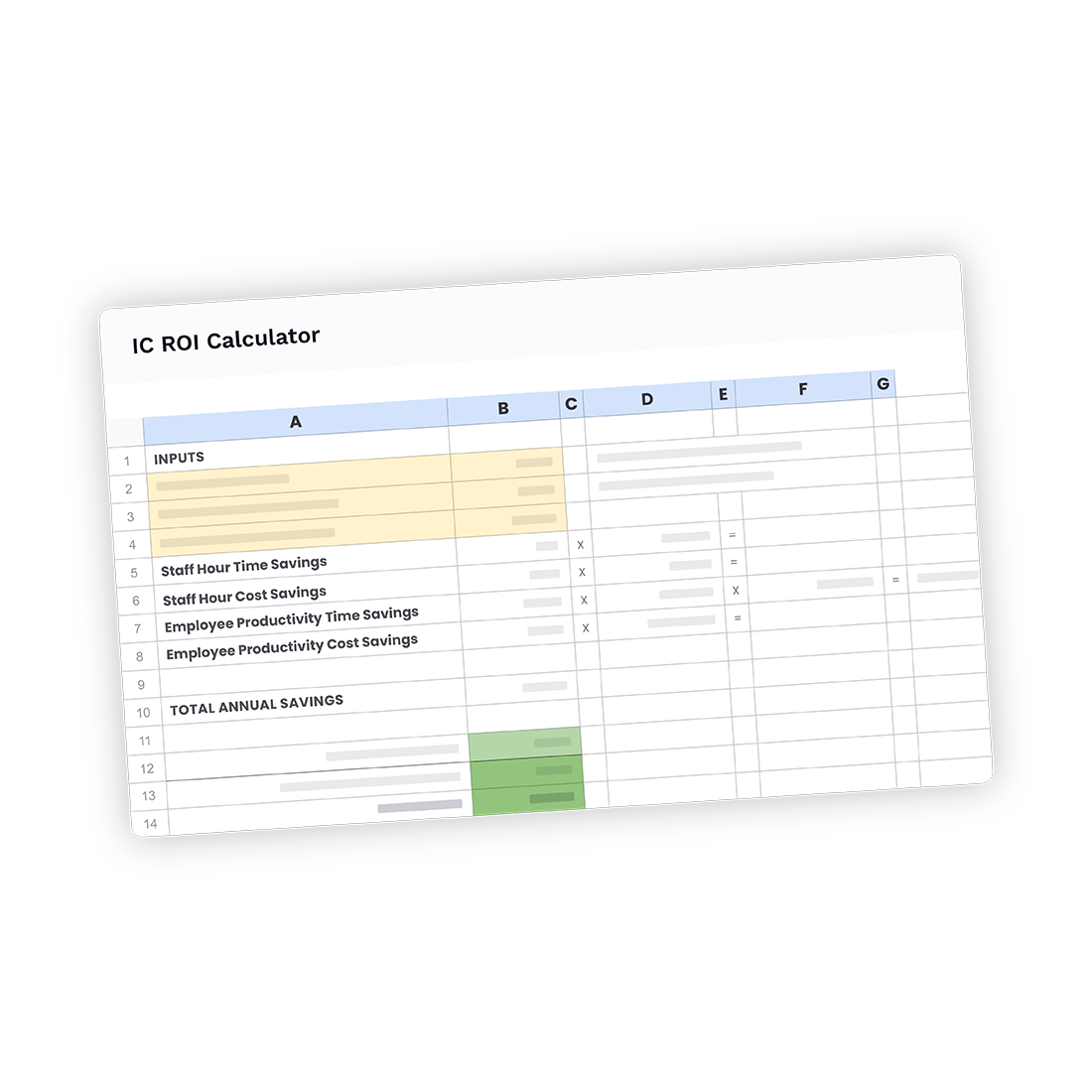
Quantify the financial benefits of your internal communications
What is an internal communication campaign? There are many examples of internal comms campaign ideas. For instance, an Internal communication campaign might involve a series of organized, ongoing messages aimed at informing and engaging employees about company initiatives, changes, or goals.
What is an example of a communication campaign? A good internal communication campaign example might involve launching a new employee benefits program. It will commonly involve a campaign that might incorporate videos, emails, town halls, and intranet articles explaining details and benefits.
How do you plan a communication campaign? Start by defining goals, identifying the target audience, key messages, communication channels (including email, intranet, and so on), timelines, and budget.
How do you run an internal communications campaign? The basics of running an internal communications campaign involve executing the plan, monitoring progress, addressing employee questions, and making adjustments as needed.

Quantify the financial benefits of your internal communications